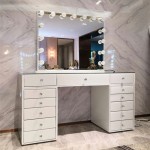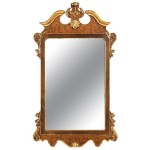How To Tell If a Mirror Is Double-Sided
Double-sided mirrors, also known as two-way mirrors, are designed to allow viewing from one side while appearing as a regular mirror from the other. This unique property makes them valuable in specific applications, such as surveillance and security. However, their discreet nature also raises privacy concerns. Distinguishing a two-way mirror from a standard mirror requires careful observation and a few simple tests.
The fundamental difference lies in the reflective surface. A standard mirror uses a thick, opaque layer of reflective material (usually silver or aluminum) applied to the back of a piece of glass. This completely blocks light from passing through. A two-way mirror, on the other hand, utilizes a thin metallic coating, often applied to the front surface of the glass. This coating allows a portion of light to pass through while reflecting the remainder. This partial transmission is what allows viewing from the less-lit side.
One of the simplest tests is the observation test. This involves comparing the brightness of the room in which the mirror is located with the perceived brightness of the reflection. If the reflected room appears significantly darker than the actual room, it is possible the mirror is two-way. This difference in brightness is due to light being transmitted through the mirror to the observation area on the other side.
The fingernail test is another common method. Place your fingernail directly against the surface of the mirror. With a standard mirror, a noticeable gap will appear between your fingernail and its reflection due to the thickness of the glass and the reflective backing. With a two-way mirror, the reflection will appear almost flush with your fingernail, as the reflective surface is at the front of the glass.
The light test provides a more definitive method for determining mirror type. This involves turning off the lights in the room where the mirror is suspected to be two-way. Then, use a bright flashlight or the light from a smartphone and hold it against the mirror's surface. If there is a concealed observation area behind the mirror, some of the light will pass through, illuminating the space and potentially revealing individuals or equipment.
The sound test can be useful, particularly in confirming suspicions raised by other tests. This method involves knocking on the mirror's surface and listening carefully to the sound produced. A standard mirror, backed by solid material, will produce a dull, flat thud. A two-way mirror may produce a hollower, more resonant sound due to the potential for an empty space behind it. However, this test's reliability can be influenced by wall construction and other environmental factors.
The dismantle test, while more invasive, provides the most conclusive evidence. This involves carefully removing the mirror from its mounting to inspect its backing. A standard mirror will have a solid, opaque backing. A two-way mirror will have a much thinner coating and allow light to pass through. This method requires caution and may be impractical in many situations due to the risk of damage.
The observation of the surrounding environment can also provide clues. Look for telltale signs of surveillance, such as small holes or irregularities in the wall around the mirror, unusual wiring, or the presence of security cameras. These indicators, combined with other tests, can strengthen suspicion regarding a two-way mirror.
It is important to note that even if these tests indicate a standard mirror, they do not guarantee absolute privacy. Surveillance technology is constantly evolving, and other methods of observation may be in use. Maintaining awareness of one's surroundings and taking appropriate precautions is crucial for protecting personal privacy.
While the methods described above can help identify potential two-way mirrors, professional assistance may be necessary in some situations. Security experts or law enforcement can provide more sophisticated methods of detection and assessment. Contacting these professionals is recommended when privacy concerns are serious or when dealing with sensitive environments.
Understanding the principles behind two-way mirrors and employing these testing methods can empower individuals to assess their surroundings and take appropriate steps to protect their privacy. Regular vigilance and awareness remain essential components of personal security in an increasingly technologically advanced world.

How To Detect A Two Way Mirror Fingernail Test

How To Tell If A Mirror Is Two Way Or Not 8 Steps With Pictures

How To Tell If A Mirror Is Two Way Or Not 8 Steps With Pictures S Hotel Mirrors

Mirror Or Two Way Glass Here S How To Tell The Difference Test Hotel Mirrors

How To Tell If A Mirror Is Two Way Or Not Quora

How Mirrors Work And To Test Two Way Glass The Horizon Sun
How To Tell If A Mirror Is Two Way Or Not Quora

Tips For Identifying Whether Your Mirror Is Two Way Or Not Ledmyplace

Women Safety Difference Between Mirror And 2 Way Glass

Forwarded Messages A Mirror Or 2 Way Glass Two Helpful Hints








